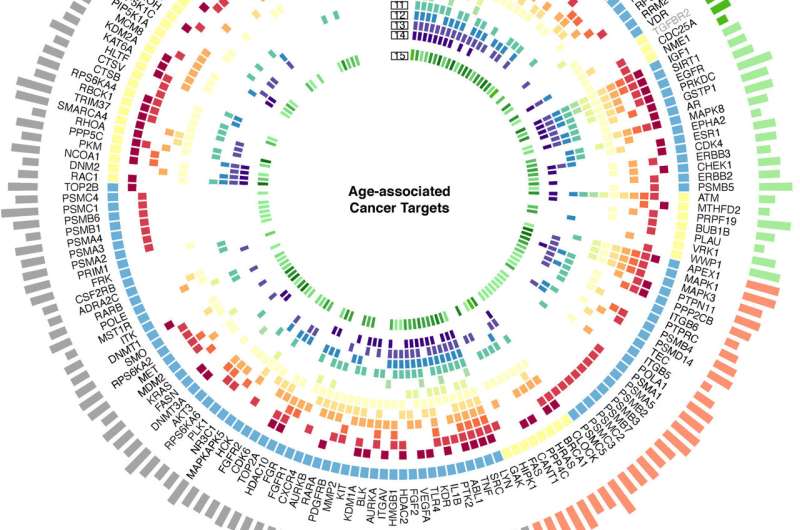This article has been reviewed according to Science X's editorial process and policies. Editors have highlighted the following attributes while ensuring the content's credibility:
fact-checked
peer-reviewed publication
proofread
International team uses AI platform to find dual targets for aging and cancer

An international research team is the first to use artificial intelligence (AI) analysis to identify dual-purpose target candidates for the treatment of cancer and aging, the most promising of which was experimentally validated. The findings were published in the journal Aging Cell.
Researchers from the University of Oslo, University of Chicago Pritzker School of Medicine, and clinical stage AI-driven drug discovery company Insilico Medicine used Insilico's AI target discovery engine, PandaOmics, to analyze transcriptomic data derived from 16,740 healthy samples and 11,303 tumors (across 11 solid cancers). They identified and classified a number of potential age-associated cancer targets, and validated one of most promising candidates in the simple organism Caenorhabditis elegans.
"Insilico Medicine has been working to understand the intersection of aging and disease since it was founded in 2014," says Insilico founder and co-CEO Alex Zhavoronkov, Ph.D., one of the study's authors. "With this study, we have not only identified a promising dual-purpose target for aging and disease, but validated it experimentally—which we see as an important first step in the development of dual-purpose treatments."
Insilico Medicine's target discovery engine, PandaOmics, draws on trillions of data points—including omics data samples (transcriptomics, genomics, epigenomics, proteomics), single cell data generated by the scientific community, compounds and biologics, patents, grants, clinical trials and publications—and analyzes that data in the context of a particular disease in order to identify actionable drug targets based on a number of key factors including novelty, confidence, commercial tractability, druggability, and safety.
In the recent study, researchers used PandaOmics to select 51 age-associated cancer targets. Of these, 22 were proposed as dual-purpose targets for an anti-aging and anti-cancer treatment with the same therapeutic direction.
Researchers next zeroed in on dual-purpose genes of interest, and found that one in particular—histone demethylase, or KDM1A—significantly extended lifespan in Caenorhabditis elegans, a simple model organism. KDM1A's anti-cancer activities have already been established in both preclinical and clinical studies, including in colorectal and triple negative breast cancers. With these latest findings, KDM1A shows promise as the first AI-identified dual-purpose target for anti-aging and anti-cancer.
"We were very encouraged by the findings," says Evgeny Izumchenko, PfD, Assistant Professor of Medicine at UChicago in the section of hematology and oncology. "This is a first study showing the feasibility of AI-driven approaches to identify potential dual-purpose targets for anti-aging and anti-cancer treatment, and clearly demonstrates the value of such tools in addressing the complex challenges at the interface between aging and carcinogenesis."
"We used C. elegans as a powerful aging research animal model and validated several of the AI-suggested genes as novel targets to achieve healthy aging. This is a perfect example of seamless collaborations between a basic researcher´s laboratory and an AI tycoon," says co-author Evandro F. Fang, Ph.D., a molecular gerontologist leading an international anti-aging laboratory at the University of Oslo, Norway.
More information: Frank W. Pun et al, A comprehensive AI‐driven analysis of large‐scale omic datasets reveals novel dual‐purpose targets for the treatment of cancer and aging, Aging Cell (2023). DOI: 10.1111/acel.14017
















